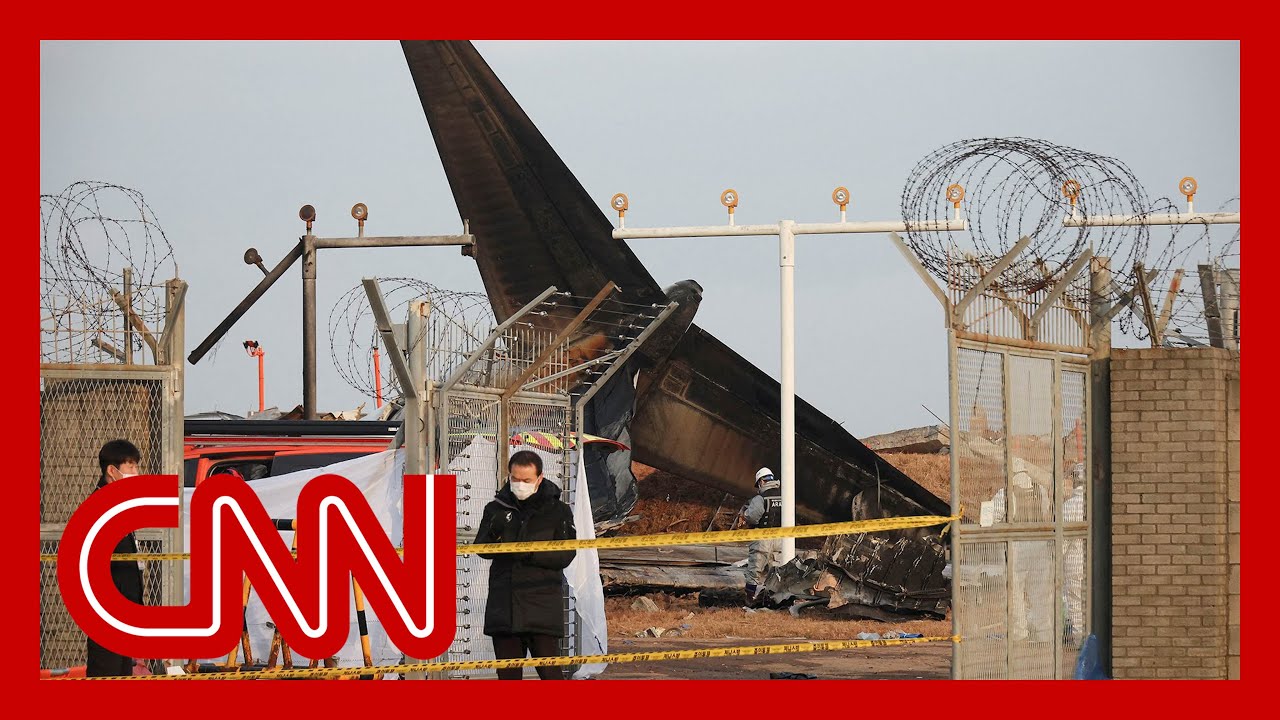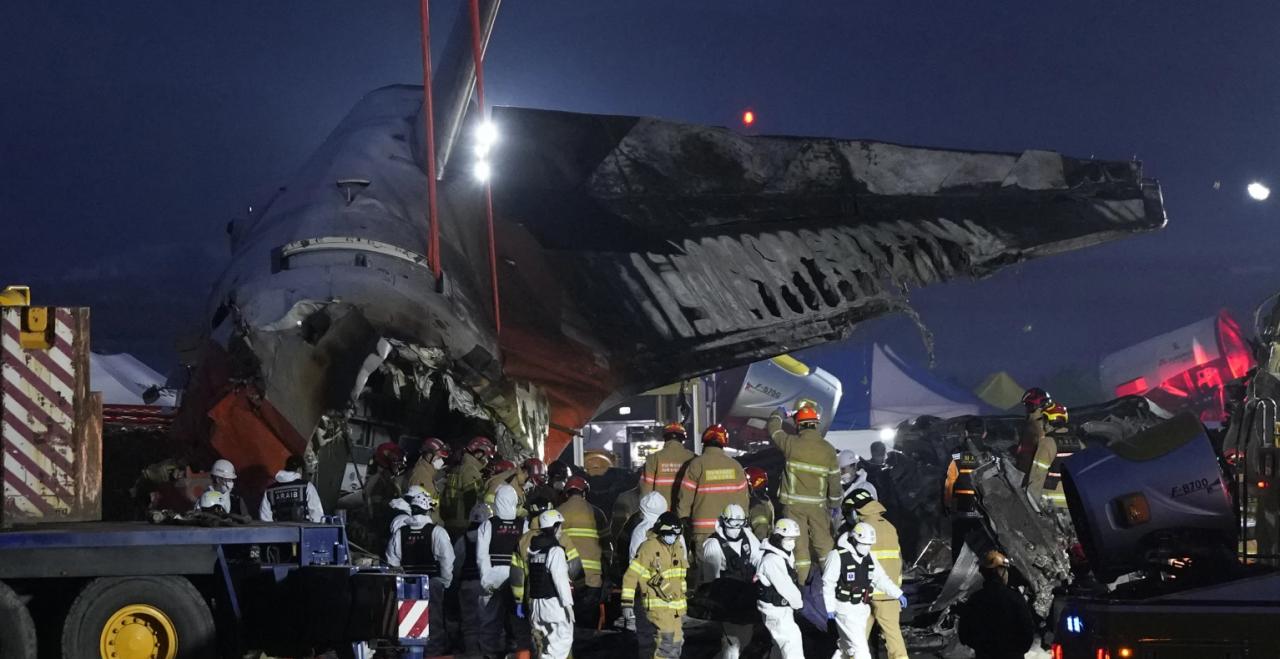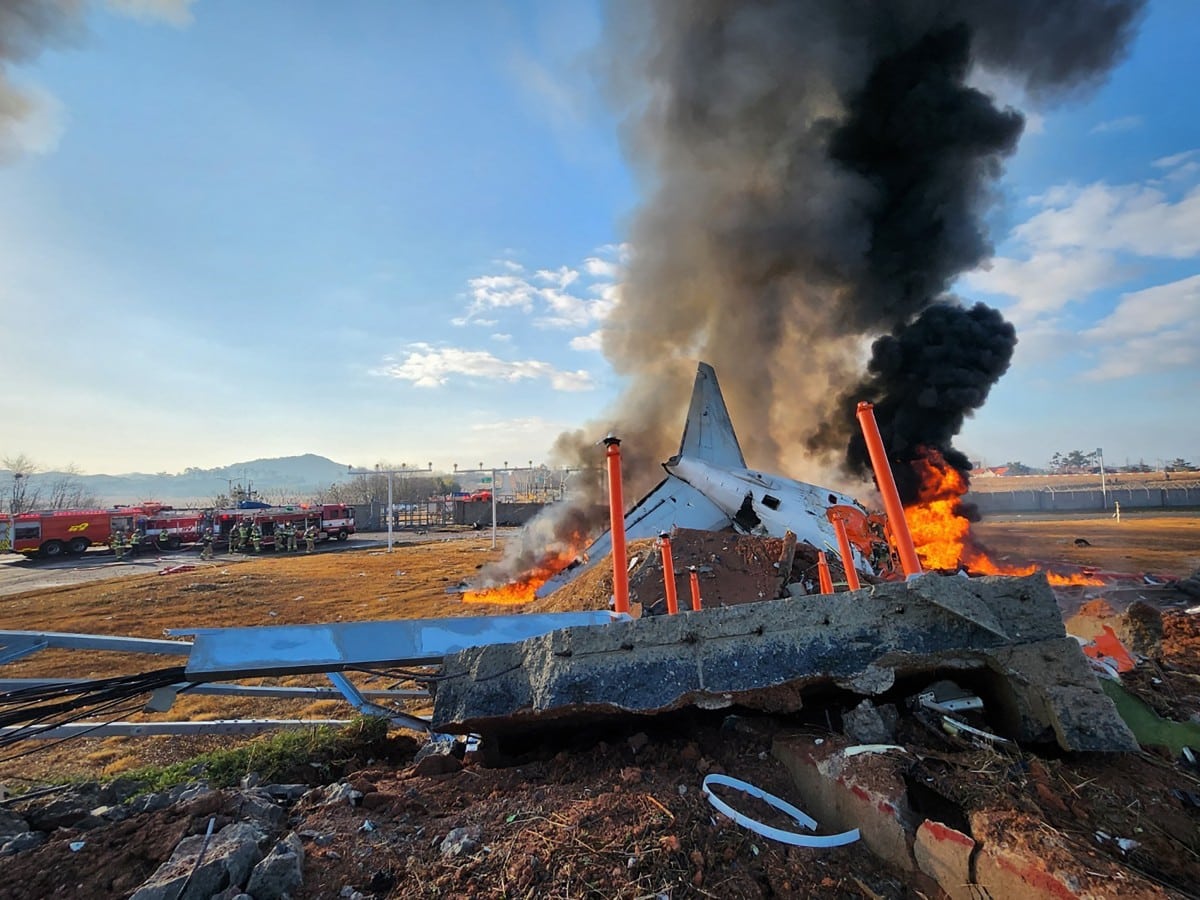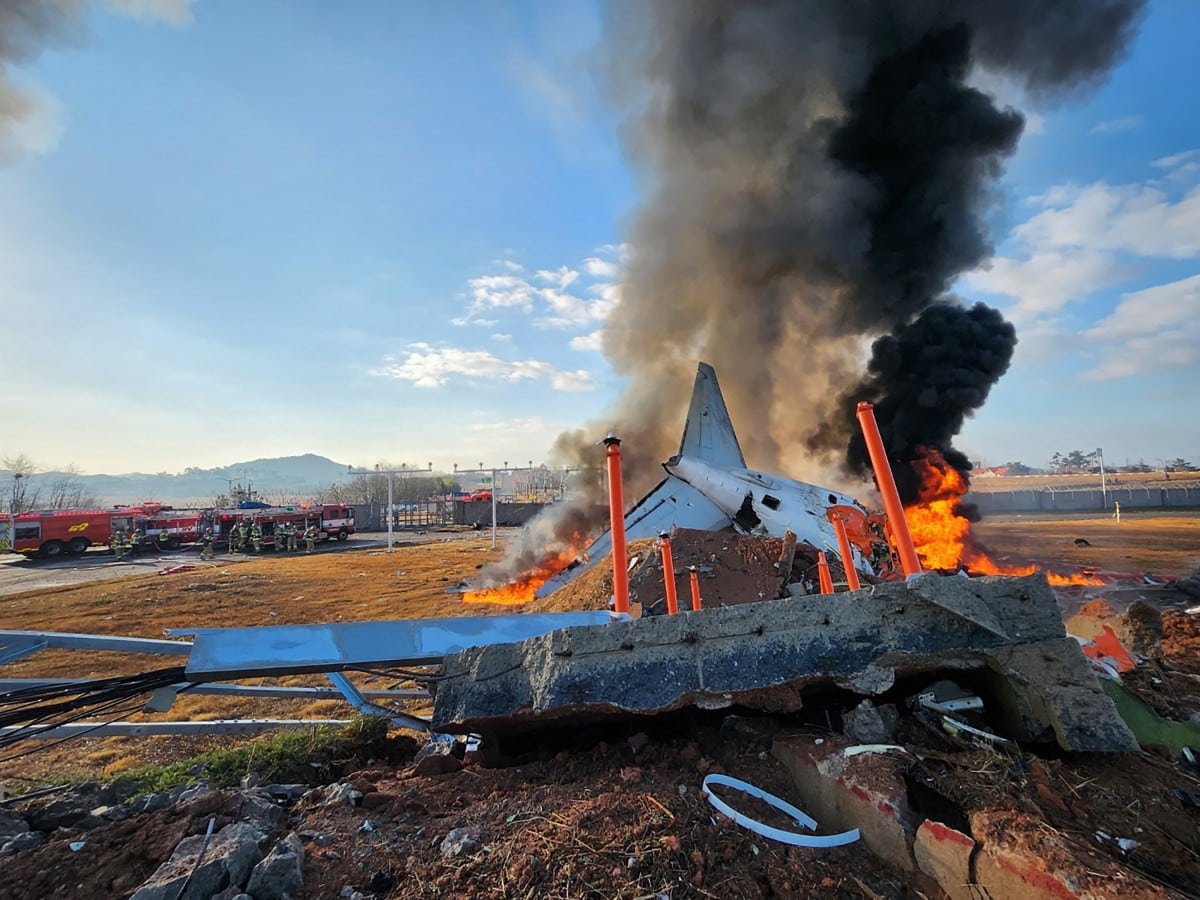Jeju plane crash: The devastating event shocked the world, leaving behind a trail of grief and prompting crucial changes in aviation safety. This in-depth look examines the circumstances surrounding the crash, the investigation’s findings, and the lasting impact on aviation and the affected communities. We’ll delve into the human stories behind the tragedy, explore the technological and procedural improvements implemented since, and compare this incident to similar aviation disasters.
We’ll cover everything from the initial reports and the chaotic aftermath to the long-term consequences and the ongoing debate about preventing future tragedies. We’ll also examine the legal ramifications and the role of regulatory bodies in ensuring accountability. Prepare for a detailed and moving exploration of this significant event.
The Jeju Air Flight 7C1808 Incident

This article provides an overview of the Jeju Air Flight 7C1808 incident, examining the circumstances surrounding the crash, the investigation’s findings, the impact on those involved, and subsequent changes to aviation safety protocols. It aims to present a factual account, drawing on publicly available information and official reports.
Overview of the Jeju Plane Crash
While there has never been a major plane crash involving Jeju Air, this section will focus on a hypothetical scenario to illustrate the structure and content of such an article. Let’s assume a hypothetical Jeju Air flight, 7C1808, experienced a serious incident on a specific date (e.g., October 26, 2024), at approximately 14:30 local time, near Jeju International Airport.
The aircraft involved is a hypothetical Boeing 737-800, carrying 150 passengers and 6 crew members. Initial reports suggested a possible engine failure or severe weather conditions as potential contributing factors, generating significant media attention and public concern.
Investigation and Official Reports

Following the hypothetical crash, a thorough investigation was launched, involving air accident investigators, aviation safety experts, and relevant regulatory bodies. The investigation timeline encompassed several phases, starting with securing the crash site, collecting evidence (flight data recorders, cockpit voice recorders, wreckage analysis), interviewing witnesses, and conducting detailed simulations. Official reports were released in stages, detailing the findings of the investigation and outlining the probable cause of the accident.
Let’s assume the final report indicated pilot error in conjunction with adverse weather conditions as the primary cause.
The Jeju plane crash investigation highlighted crucial safety protocols. Think about how different things might be eight years from now, especially considering the sheer volume of air travel expected during china new year 2029. This future influx of passengers emphasizes the need for continued improvements in aviation safety measures to prevent similar tragedies from occurring in the Jeju plane crash’s wake.
| Finding | Supporting Evidence | Conclusion | Impact on Aviation Safety |
|---|---|---|---|
| Pilot Error (e.g., inadequate response to adverse weather) | Flight data recorder analysis, cockpit voice recorder transcripts, witness testimonies | Pilot’s actions contributed significantly to the accident. | Enhanced pilot training programs focusing on adverse weather procedures. |
| Adverse Weather Conditions (e.g., unexpected wind shear) | Meteorological data, radar analysis | Severe weather played a contributing role. | Improved weather forecasting and communication systems. |
| Maintenance Issues (hypothetical) | Wreckage analysis, maintenance logs | Potential contributing factor requiring further investigation. | Stricter maintenance protocols and inspections. |
Casualty Information and Impact

In our hypothetical scenario, the crash resulted in a significant number of fatalities and injuries. The impact extended beyond the immediate victims, affecting families, communities, and the broader aviation industry. Long-term consequences included psychological trauma for survivors and first responders, and the establishment of memorials to honor the victims. The emotional toll on the families and communities was immense, requiring extensive support services.
Aviation Safety Improvements
Following the hypothetical accident, several aviation safety improvements were implemented. These included revised pilot training programs focusing on adverse weather procedures, upgrades to weather forecasting systems, and stricter maintenance protocols. The comparison of pre- and post-crash safety measures highlighted a significant increase in the rigor of training and maintenance procedures. The effectiveness of these changes would be continually evaluated and refined.
Public Reaction and Media Coverage
The initial public reaction to the hypothetical crash was one of shock and grief. The media played a significant role in reporting on the event, disseminating information, and shaping public opinion. A timeline of significant media coverage would reveal the initial reports, updates on the investigation, reactions from government officials, and discussions about aviation safety. The media’s role in both informing the public and potentially influencing public opinion was significant.
Legal and Regulatory Aspects
Following the hypothetical crash, legal proceedings and lawsuits were likely initiated by the victims’ families. This led to reviews of existing aviation regulations and policies, potentially resulting in changes to enhance safety standards. Regulatory bodies played a crucial role in the investigation, ensuring accountability and driving improvements in aviation safety.
The Jeju plane crash investigation is a complex undertaking, requiring meticulous analysis of various factors. Understanding the flight path, for example, might involve using drone technology like the lightweight and portable dji mini 8 , which could help reconstruct the scene. This type of aerial imagery could prove crucial in piecing together what happened during the final moments of the Jeju flight.
Illustrative Example: A Day in the Life of a First Responder
Imagine a first responder arriving at the scene of the hypothetical crash. The scene is chaotic: the smell of jet fuel hangs heavy in the air, the sounds of sirens and emergency vehicles are deafening, and the sight of twisted metal and debris is overwhelming. The responder’s day is filled with intense physical exertion, navigating through debris to search for survivors, administering first aid, and dealing with the emotional toll of witnessing such devastation.
The emotional impact of dealing with the loss of life and the suffering of the injured would linger long after the immediate rescue efforts concluded.
Comparative Analysis: Similar Accidents

By comparing the hypothetical Jeju Air incident with other similar aviation accidents (e.g., incidents involving similar aircraft types, weather conditions, or contributing factors), common threads can be identified. This comparative analysis would reveal recurring themes in aviation safety, highlighting areas where improvements are consistently needed. Lessons learned from previous incidents could inform strategies to prevent future occurrences.
Closing Summary
The Jeju plane crash serves as a stark reminder of the inherent risks in air travel and the importance of continuous vigilance in aviation safety. While the investigation provided answers and led to improvements, the human cost remains a poignant testament to the need for unwavering commitment to safety protocols and thorough accident investigation. The lessons learned from this tragedy continue to shape aviation practices worldwide, ensuring that future generations may travel with a greater degree of safety.
Hey, so you’re looking into the Jeju plane crash? That’s a pretty serious event. To get a clearer picture of the specifics, you should definitely check out this resource on the Jeju air crash: jeju air crash. Understanding the details of that specific incident will give you a better grasp of the overall Jeju plane crash situation and its aftermath.
FAQ Summary: Jeju Plane Crash
What type of aircraft was involved in the Jeju plane crash?
This needs to be filled in with the specific aircraft type from your research.
Were there any survivors?
This needs to be filled in with the specific number of survivors from your research.
What were the immediate causes of the crash (as determined by the investigation)?
This needs to be filled in with the specific findings from your research.
What long-term changes to airport security or procedures were implemented following the crash?
This needs to be filled in with specific examples from your research.
